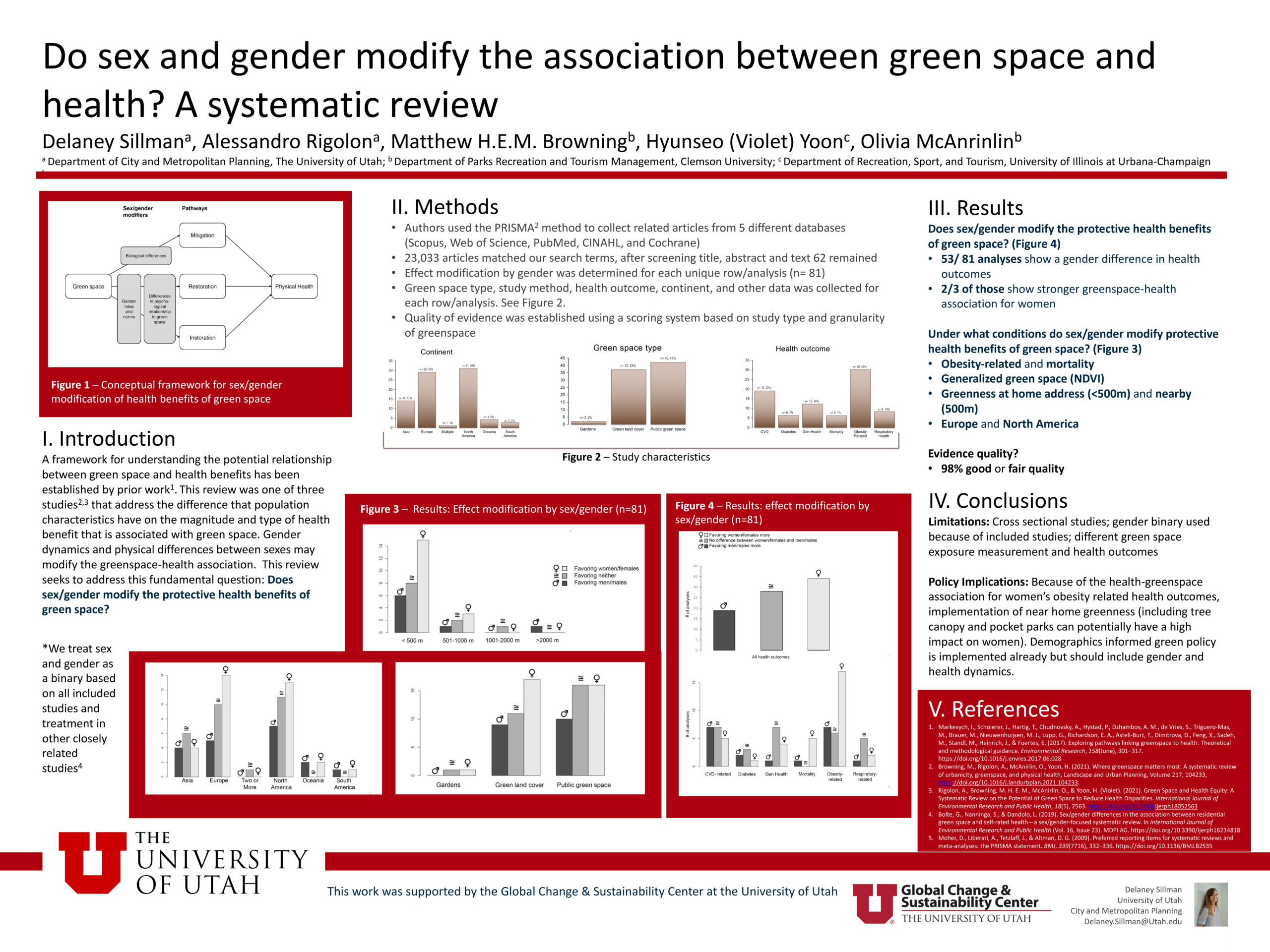Do sex and gender modify the association between green space and physical health?
–Delaney Sillman, Alessandro Rigolon, Matthew Browning, Hyunseo (Violet) Yoon, Olivia McAnirlin
[bs_collapse id=”collapse_bb86-afd7″]
[bs_citem title=”Bio” id=”citem_e610-6c22″ parent=”collapse_bb86-afd7″]
I am currently a masters student studying City and Metropolitan Planning. I worked with Dr. Alessandro Rigolon with a research cohort which has synthesized green-space and health associations through an equity lens. This and other topics related to health, equity, active transportation, and community building are all of interest to me. I look forward to using this research and other projects in my future planning practice.
[/bs_citem]
[bs_citem title=”Abstract” id=”citem_eca8-96a7″ parent=”collapse_bb86-afd7″]
A growing body of literature shows that green space in urban areas can have benefits on the physical health of populations living within close proximity, or those that use the space. The framework of restoration, instoration, and mitigation has been used to categorize the causal pathways for health benefits that can be gleaned from a variety of different green spaces. Using an existing body of research we conducted a study to support a framework for how green spaces benefit women’s health relatively more than men’s in certain contexts. 81 unique analysis of green space and the effect it has on health stratified by gender were derived from different studies worldwide to contribute to better understanding of gendered approaches to implementing green space to optimize the health benefits to women who historically have been marginalized in society.
[/bs_citem]
[/bs_collapse]

